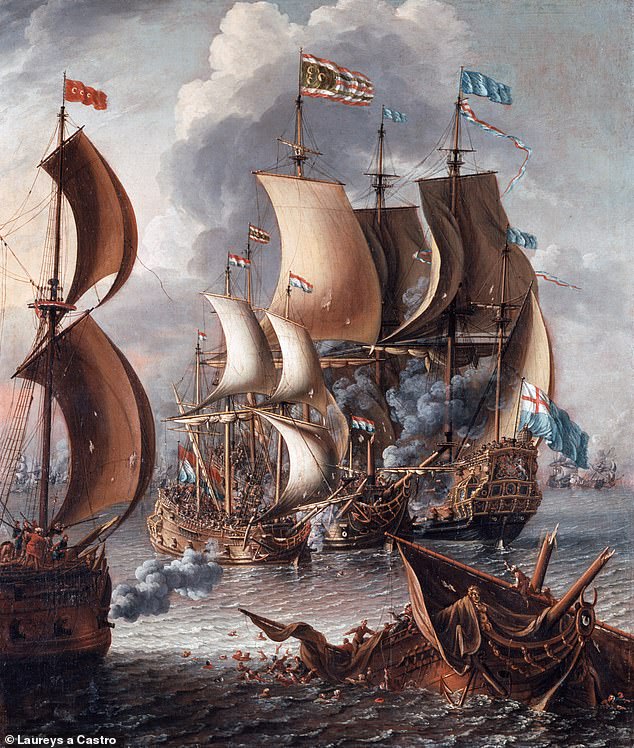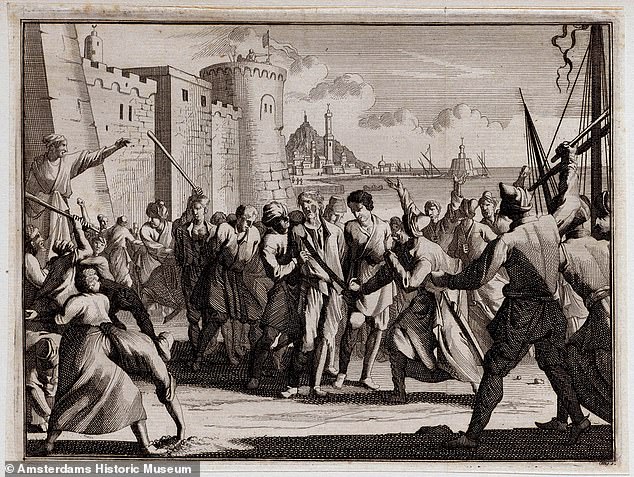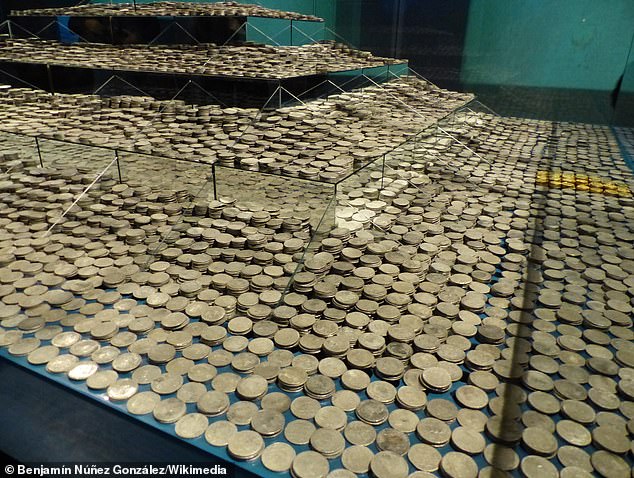Controversial treasure hunters reveal they’ve discovered one of the ‘great maritime horrors’ – as they release chilling details of pirate shipwreck
After nearly two decades of secrecy, a group of treasure hunters finally open up about a centuries-old pirate shipwreck they discovered 820 meters deep in the Mediterranean Sea.
Florida-based Odyssey Marine Exploration says it found a ship about 45 feet (13.7 meters) long in 2005. The ship was once manned by Barbary corsairs, Muslim pirates and privateers who operated off the coast of North Africa and often attacked European ships.
No detailed analysis has yet been carried out of the ship’s wooden hull, which could reveal when it was built and how long it was in service.
According to Sean Kingsley, editor-in-chief of Wreckwatch magazine, a site that investigates shipwrecks, pottery and glassware on board indicate the ship sank around 1760.
“Most of the pottery shows exact parallels with the 18th-century ceramics excavated during rescue work at Martyrs’ Square in Algiers,” Kingsley said. Newsweek‘The Ottoman bowls on the wreck were no longer made in Turkey around 1755. The most accurate dating comes from the glass bottles that were blown, at the latest, 1740-1760. So the ship cannot be dated after 1760.’
Pottery and other artifacts found in the wreck of a pirate ship from Algiers dating from the mid-18th century
The wreck, found in international waters between Morocco and Spain, has been linked to Algiers, the current capital of Algeria.
But just a few centuries ago, the city was known as the center of piracy on the Barbary Coast.
“The threat of the hijackers from Algiers was a daily fear for the West,” he said.
“The shipwreck found in deep water is a valuable echo of one of the greatest maritime horrors in the western Mediterranean,” said Greg Stemm, director of Seascape Artifact Exhibits Inc. and former chairman of Odyssey.
From the 1500s until the French invaded in 1830, Algiers was a tribute state of the Ottoman Empire. It also attracted Muslim refugees from Spain and Christian converts to Islam who dreamed of getting rich through piracy.

Greg Stemm, President of Seascape Artifact Exhibits Inc. and Former Chairman of Odyssey
“The pirate capital of Algiers, though less famous than the pirates of the Caribbean, had been turning to piracy much earlier and was a much bigger business,” Kingsley said. “From 1525 to 1830, an entire city of 60,000 ‘rogues and renegades’ lived under the sword.”
He added that Barbary pirates were raiding as far as southern England.
“They didn’t just take your wealth, they enslaved anyone they caught to be ransomed for a high price. It was an atrocity of daily life that Western traders had to gamble with,” Kingsley said.
This particular shipwreck was found by accident by Odyssey. Their main objective was to excavate a ship of the British Royal Navy, the 80-gun HMS Sussex, which was lost in a storm in 1694.
Odyssey has caused quite a bit of controversy in the past for recovering valuable treasures from shipwrecks.
In 2007, the wreck of the Nuestra Señora de las Mercedes, a Spanish warship from 1804, was found.
The Odyssey initially raked in $600 million by recovering 17 tons of gold and silver coins from the ship, but after a lengthy court battle the Spanish government won the right to take back the treasure.
The coins are now on display at the National Museum of Underwater Archaeology in Cartagena.

A 1681 painting by Flemish painter Laureys a Castro depicting a naval battle between European ships and Barbary privateers

An illustration shows enslaved Christians captured by privateers arriving at the port of Algiers to be ransomed

Pictured: The coins Odyssey found aboard the wreck of the 1804 Spanish warship Nuestra Señora de las Mercedes. These coins are on display in a Spanish museum after a long legal battle between Odyssey and the Spanish government over who had the rightful claim
The 76-meter Odyssey research vessel served as a base for the investigation of the Corsair Algiers shipwreck. The team used a remotely operated vehicle equipped with archaeological instruments to search through the debris.
Kingsley explained that this discovery is significant because it is the first wreck to contain artifacts – pottery, glassware and heavy weaponry – that can be directly linked to Algiers.
“The sunken corsair was very heavily armed with muskets, four large guns and 10 swivel guns. If the captain got into trouble, these anti-personnel weapons could be quickly installed for attacking crews in the rigging and on deck,” Kingsley said.
Only a third of the hull still protrudes above the seabed, mainly due to damage caused by Mediterranean ‘shipworms’ (a type of sea mussel).
The site has not yet been fully excavated, but Odyssey suspects that the entire length of the ship, down to the keel, is still intact beneath the sand.
It is believed that the pirate ship was en route to Spain to plunder ships and steal slaves for ransom when it sank.
“The little ship was almost certainly lost in a storm that came out of nowhere,” Kingsley said.
‘The brave and courageous privateer punched above his weight on the unforgiving sea.’
